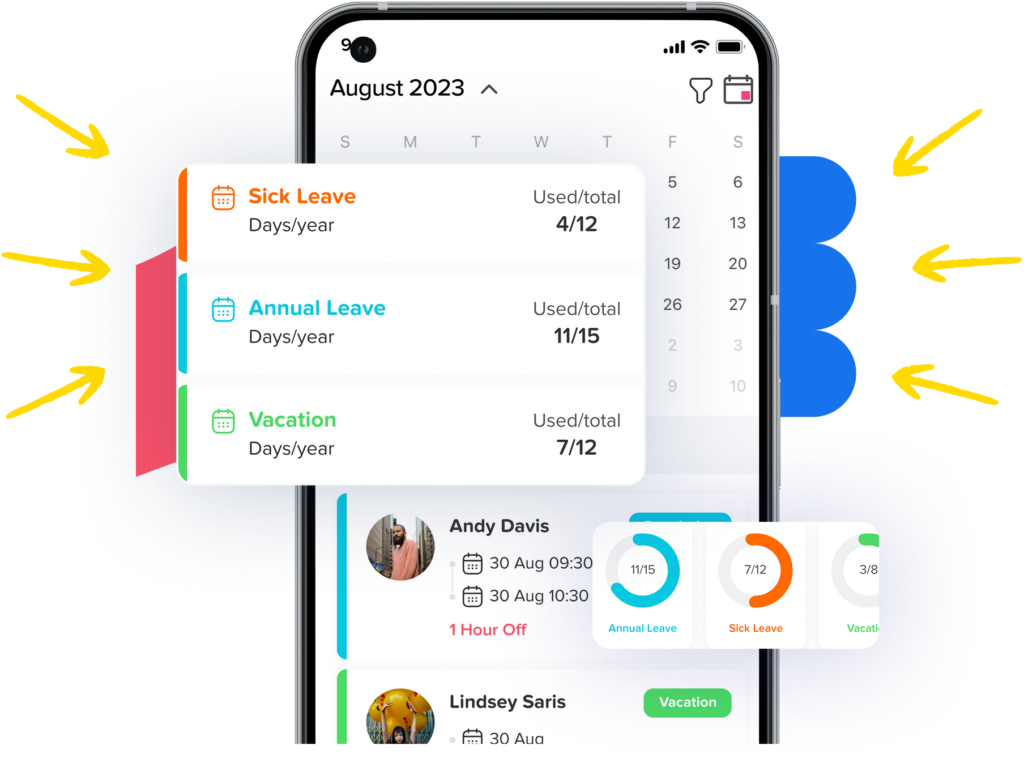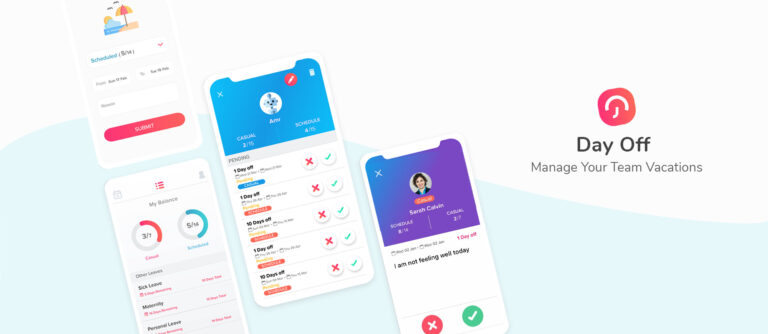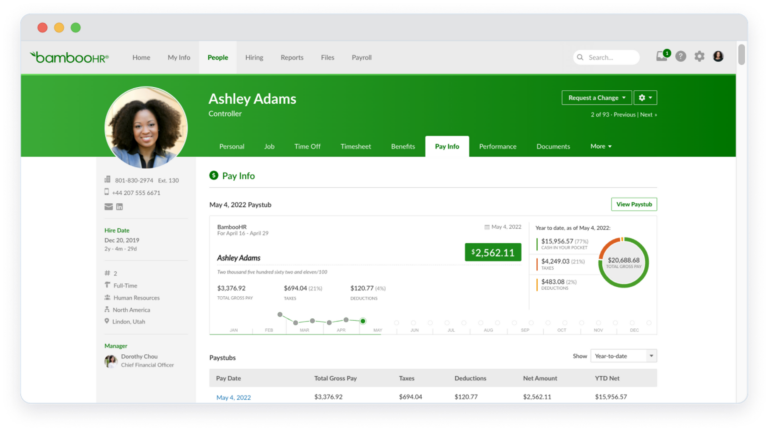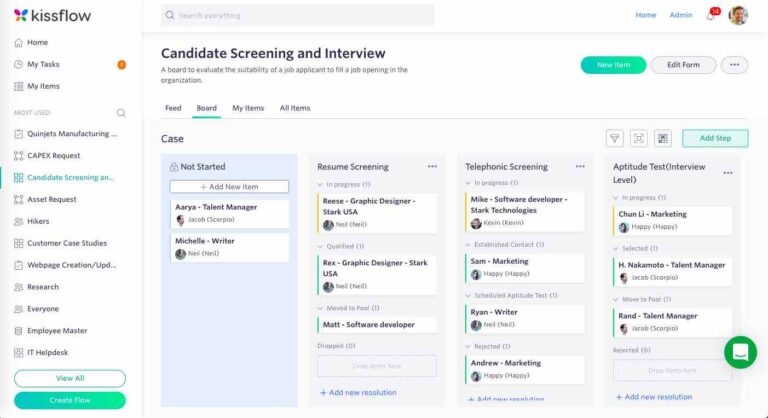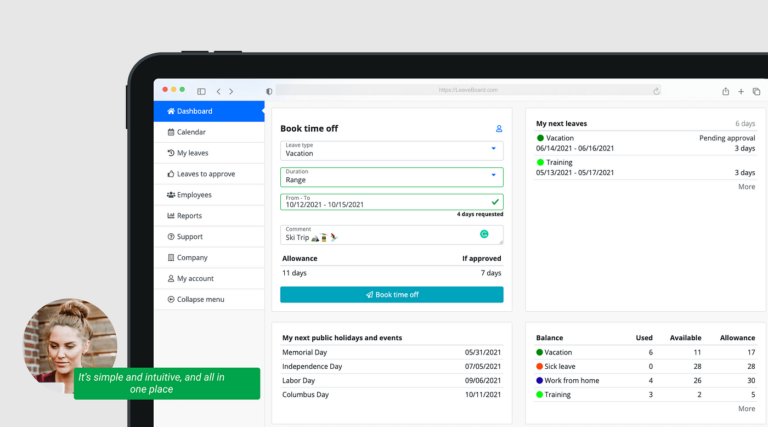Managing employee leave can be a complex task for HR teams, especially in organizations with growing workforces and diverse leave policies. A streamlined and efficient leave-tracking system is crucial to ensuring business continuity, employee satisfaction, and compliance with labor laws. Day Off simplifies leave management by providing an intuitive and automated platform for tracking employee time off, across PTO, sick leave, vacations, and more. This article explores the key reasons every HR team should integrate Day Off into their leave management strategy.
Simplifies Leave Requests and Approvals
One of the biggest challenges HR teams face is handling numerous leave requests efficiently. With Day Off, the process becomes seamless: employees submit requests through a simple interface, while managers can approve or reject with a single click. The system supports automated workflows, reduces paperwork, and ensures transparency in approval.
Key benefits include:
Employees request leave quickly via web or mobile.
Managers get real-time notifications of pending requests.
HR can configure automatic leave policies and approval chains.
Ensures Compliance with Labor Laws
Each country or region has specific regulations governing leave entitlements, accruals, rollover limits and documentation. Tracking compliance manually can be error-prone. Day Off helps HR stay compliant by automating accruals, tracking region-specific holiday calendars and maintaining audit-ready records.
How it helps:
Customizable leave policies that align with local labor law terms.
Automated accrual calculations (monthly, quarterly, annually) and carryover rules.
Secure audit trails and detailed history of all requests and approvals.
Enhances Transparency and Accountability
Transparency builds trust. Day Off offers a centralized dashboard where HR teams, managers, and employees can view leave balances, upcoming holidays, pending requests and historical records. This makes it easier to avoid misunderstandings and ensures fairness.
Features that promote transparency:
Shared leave calendar showing who is out and when.
Clear leave balances visible to each employee.
Historical leave records accessible to HR for audits and reviews.
Increases Employee Satisfaction and Promotes Work-Life Balance
When employees have easy access to their leave information and can request time off without delays or confusion, they feel more valued and engaged. Day Off supports a positive work environment by removing barriers around time off.
Why it matters:
Employees gain control over their time off and can plan ahead.
Managers can better plan workloads and prevent burnout.
A healthier work-life balance improves retention rates and morale.
Integration with Calendars and Team Tools
A leave-tracking system should not operate in isolation. Day Off integrates with commonly used calendars and communication tools, ensuring that approved leave events sync automatically and nobody is left wondering who’s available.
Integration advantages:
Syncs with Google Calendar and Outlook so leave appears alongside meetings.
Displays approved leaves in shared calendars to avoid scheduling conflicts.
Works with Slack, Microsoft Teams and other tools for notifications and visibility.
Real-Time Reporting and Insights
HR professionals need data-driven insights to optimize leave policies, ensure compliance, and support workforce planning. Day Off offers robust reporting and analytics tools.
Reporting capabilities include:
Custom reports on leave trends, usage patterns and absences.
Insights into peak vacation periods, understaffing risk and compliance exposure.
Exportable reports for payroll, audits and executive summaries.
Customizable Leave Policies and Workflows
No two organizations are the same. Day Off supports full customization of leave types, accrual rules, carryover limits, approval workflows and more.
Key customization features:
Define accrual rules by tenure, job role or location.
Establish leave categories (e.g., parental leave, bereavement, study leave) and rules.
Enable custom workflows, multi-step approvals and departmental policies.
Supports Remote, Hybrid and Global Workforces
With teams spanning multiple locations, time zones and working arrangements, leave management becomes increasingly complex. Day Off is designed to handle these realities.
Benefits for remote/global teams:
Accessible from any device via cloud; mobile app available.
Multi-location support with custom working days, holiday calendars and policy sets per region.
Real-time visibility of team availability across locations and time zones.
Reduces Administrative Burden on HR Teams
Manual tracking means spreadsheets, email chains, human error and time wasted. Day Off automates much of the process, freeing HR to focus on strategic rather than transactional work.
How it helps HR teams:
No more manual calculations or chasing approvals.
Fewer errors in leave balances, fewer payroll disputes.
Saves HR time, enabling focus on employee engagement and culture.
Cost-Effective and Scalable Solution
As organizations grow, so do their leave management needs. Day Off is built to scale, offering affordability and flexibility.
Why it’s a smart investment:
Free plan available for smaller teams, scalable pricing for larger ones.
Avoids the high cost and complexity of legacy HR systems.
Easily accommodates increasing employees, locations and policy complexity without rising overhead.
Frequently Asked Questions (FAQ)
What is Day Off and how does it work?
Day Off is a cloud-based leave and PTO management platform that enables companies to define leave policies, track accruals, manage requests and approvals, view team availability, and generate reports. Employees use the platform or mobile app to request time off; managers approve, and the system tracks balances, displays calendar views and ensures policy compliance.
Can Day Off handle custom leave types and accrual rules?
Yes, one of Day Off’s core strengths is its policy flexibility. You can define unlimited leave types (vacation, sick, parental, bereavement, unpaid, comp time, etc.), set accrual rules (annual, monthly, by hours, on hire date), define carryover limits or expiration, allow negative balances if needed, and tailor policies by department, location or role.
Is Day Off suitable for global or multi-location teams?
Yes. Day Off supports companies operating in multiple regions by allowing: multiple working day definitions, region-specific holiday calendars, separate leave policies per location, and visibility across teams. This makes it ideal for remote, hybrid or international workplaces.
How does the calendar integration work with Day Off?
Day Off integrates with popular tools such as Google Calendar, Outlook Calendar, Slack and Microsoft Teams. When leave is approved, it can automatically sync to the employee’s calendar or a shared team calendar, helping avoid scheduling conflicts and improving visibility of team availability.
Can employees request leave via mobile?
Absolutely. Day Off provides a mobile-friendly experience (iOS and Android) allowing employees to submit leave requests, check leave balances, view the team calendar and get notifications, from anywhere. Managers can approve or reject on the go too.
How does Day Off support reporting and analytics?
Day Off includes dashboards and exportable reports that let HR and management track leave trends, usage patterns, balance carryover, unscheduled absences, departmental leave data and more. These insights help with workforce planning, policy adjustment and compliance monitoring.
What setup time is required for Day Off?
Day Off is designed for rapid deployment. You can set up your account, invite employees, define working days, leave policies and locations in minutes. Its intuitive interface means minimal training is needed for employees and managers.
Is Day Off secure and compliant with data protection standards?
Yes. Day Off uses secure cloud-hosting, TLS/SSL encryption, access controls, backups and industry-standard security practices. It supports audit trails, role-based permissions and is suitable for organizations concerned with data security.
What happens if my company grows beyond the free plan?
Day Off offers a free plan with essential features and unlimited employees. As your needs grow, for multiple teams, locations, multi-approver workflows or advanced analytics, you can upgrade to a Pro plan. The platform scales with your growth without forcing you into overly expensive packages.
How does Day Off reduce HR administrative workload?
By automating request submission, approval routing, leave balance calculations, calendar updates and reporting, Day Off eliminates many manual tasks. HR teams spend less time chasing forms, correcting spreadsheets or managing exceptions, freeing them to focus on strategic work.
Can I restrict leave during critical business periods?
Yes, Day Off supports “blockout dates” or blackout periods where leave requests can be limited or prevented for certain teams or locations. This helps ensure coverage during key business cycles, product launches or peak seasons.
Does Day Off support part-time, hourly or flexible leave formats?
Yes. Leave balances can be defined in hours or days, partial-day requests are supported and you can customize rules for different employment types (full-time, part-time, shift work). This gives you flexibility for diverse workforces.
Conclusion
By integrating Day Off, organizations gain far more than just a PTO tracker, they gain a tool that strengthens compliance, enhances communication, and fosters a culture of trust and accountability. Employees enjoy greater control over their time off, managers make faster, fairer decisions, and HR teams reclaim valuable time to focus on strategic priorities rather than administrative tasks.
Whether your company is a fast-growing startup or a large enterprise managing multiple locations, Day Off scales effortlessly with your needs. It’s intuitive, secure, and built for the realities of hybrid and global workplaces.
Ultimately, Day Off empowers organizations to do more than track leave, it helps them build a happier, more balanced, and more productive workforce. And in today’s competitive world, that’s the kind of advantage every business needs.


